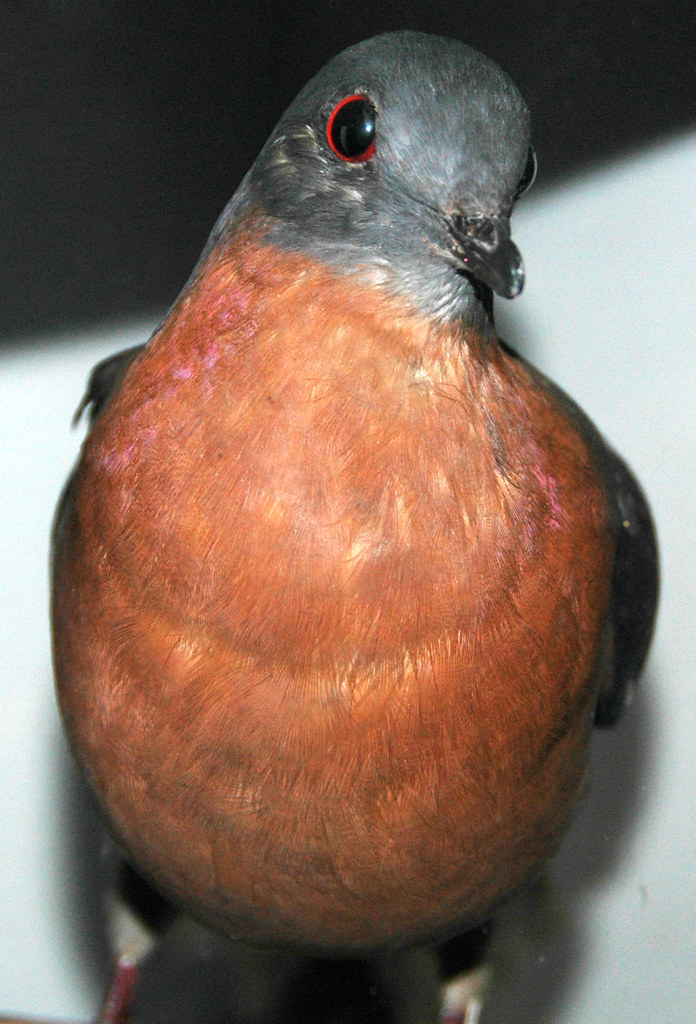

Swedish naturalist Carl Linnaeus coined the binomial name Columba macroura for both the mourning dove and the passenger pigeon in the 1758 edition of his work Systema Naturae (the starting point of biological nomenclature), wherein he appears to have considered the two identical. The eradication of this species is a notable example of anthropogenic extinction. The last captive birds were divided in three groups around the turn of the 20th century, some of which were photographed alive. Martha, thought to be the last passenger pigeon, died on September 1, 1914, at the Cincinnati Zoo. The last confirmed wild bird is thought to have been shot in 1901. A slow decline between about 18 was followed by a rapid decline between 18. There were several other factors contributing to the decline and subsequent extinction of the species, including shrinking of the large breeding populations necessary for preservation of the species and widespread deforestation, which destroyed its habitat. Pigeon meat was commercialized as cheap food, resulting in hunting on a massive scale for many decades. Passenger pigeons were hunted by Native Americans, but hunting intensified after the arrival of Europeans, particularly in the 19th century. It practiced communal roosting and communal breeding, and its extreme gregariousness may be linked with searching for food and predator satiation. The bird fed mainly on mast, and also fruits and invertebrates. A very fast flyer, the passenger pigeon could reach a speed of 100 km/h (62 mph). The pigeon migrated in enormous flocks, constantly searching for food, shelter, and breeding grounds, and was once the most abundant bird in North America, numbering around 3 billion, and possibly up to 5 billion. It mainly inhabited the deciduous forests of eastern North America and was also recorded elsewhere, but bred primarily around the Great Lakes. The juvenile was similar to the female, but without iridescence. The female was 380 to 400 mm (15.0 to 15.7 in), and was duller and browner than the male overall. The male was 390 to 410 mm (15.4 to 16.1 in) in length, mainly gray on the upperparts, lighter on the underparts, with iridescent bronze feathers on the neck, and black spots on the wings. The passenger pigeon was sexually dimorphic in size and coloration. The earliest passenger pigeon fossils date back to the late Pleistocene epoch, and thrived throughout the Holocene epoch until the early 20th century, where the genus' population drastically declined due to habitat destruction and excessive hunting. One flock, according to southern Ontario residents in 1866, apparently held in excess of 3.5 billion birds, measured a mile wide and 300 miles long, and took 14 hours to pass.

Named after the French word passager which means "passing by", the bird was one of the most plentiful species in the Americas, if not the world, with some flocks containing over a billion individuals. The passenger pigeon ( Ectopistes migratorius), also known as the wild pigeon, is an extinct North American bird. A 1912 photograph of Martha, the last passenger pigeon.


 0 kommentar(er)
0 kommentar(er)
